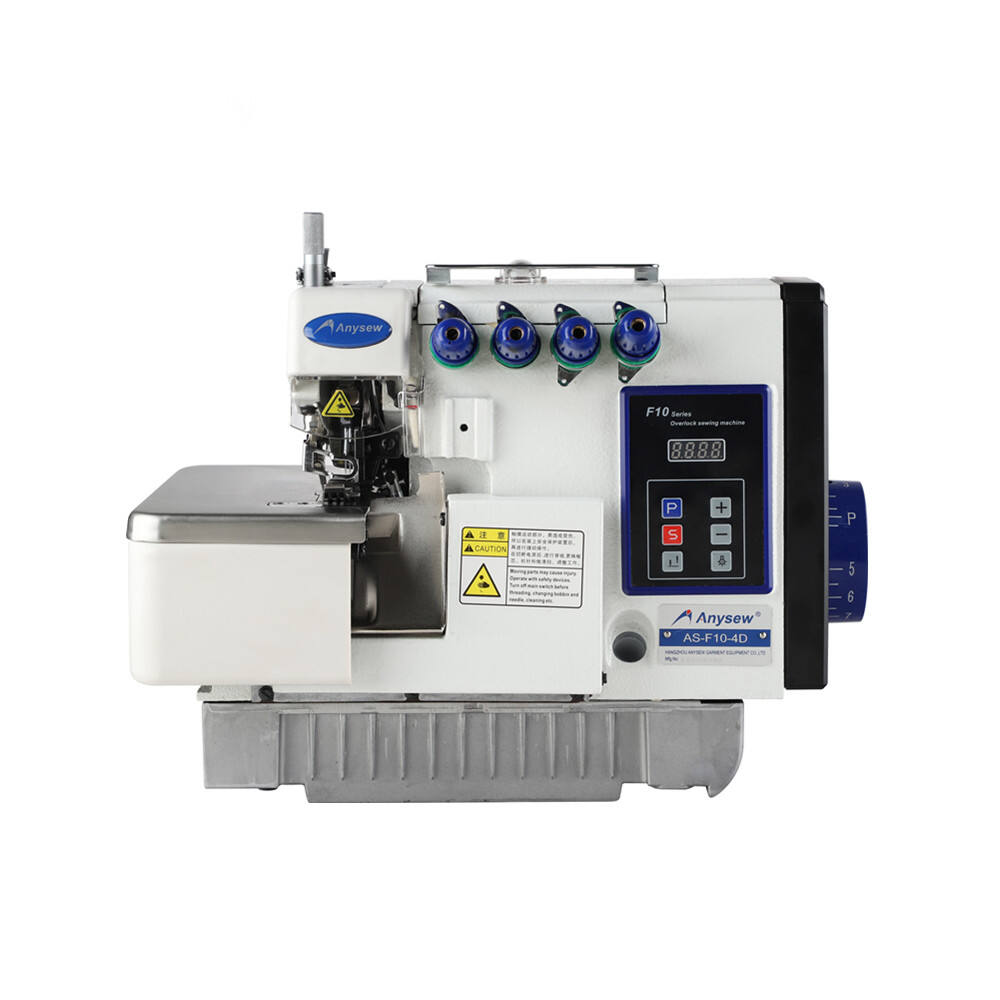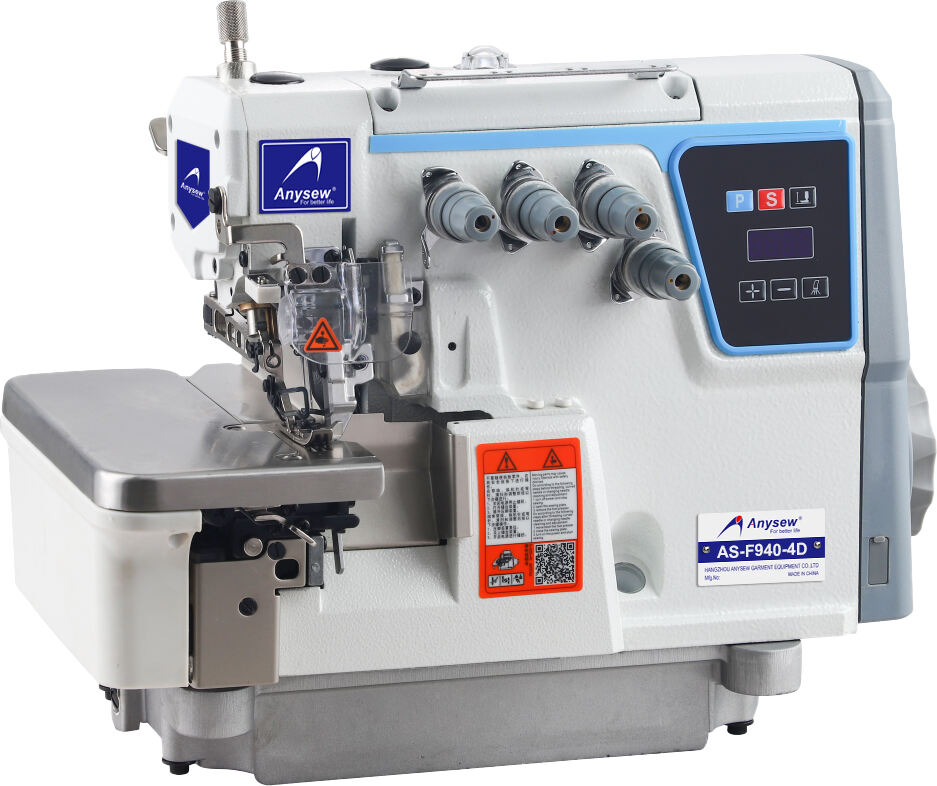What Are the Advantages of Using Overlock Sewing Machines?
When it comes to creating strong seams, neat finishes, and professional-quality garments, the Overlock Sewing Machine is one of the most essential tools in the textile industry. Known for its ability to sew, trim, and finish fabric edges in a single operation, it saves time, improves efficiency, and enhances the durability of clothing and textile products. Whether for home use or large-scale garment manufacturing, understanding the advantages of using this machine can help you achieve better sewing outcomes.
Understanding the Overlock Sewing Machine
The Overlock Sewing Machine, often simply called a serger, is designed to sew over the edge of fabric pieces to enclose the seam or hem. It differs from a traditional sewing machine in several ways. Instead of a single straight stitch, it uses loopers and multiple threads to create interlocked stitches that prevent fraying and unraveling. This is especially useful for lightweight and stretch fabrics that tend to wear out faster with regular stitching.
Another defining feature is its built-in cutting blade, which trims excess fabric while sewing. This ensures that the seam is not only strong but also clean and even. The result is a professionally finished look similar to what you see in store-bought clothes.
Why Overlock Sewing Machines Are Different
Compared to conventional machines, the Overlock Sewing Machine allows for high-speed stitching with multiple threads. Some models can operate with three, four, or even five threads, each serving different purposes. For example, a three-thread overlock is ideal for edge finishing, while a five-thread overlock combines a chain stitch with an overlock for highly durable seams.
The versatility and efficiency of this type of machine make it a valuable asset for tailors, designers, and textile manufacturers.
Advantages of Using an Overlock Sewing Machine
Creates Professional-Quality Seams
One of the primary benefits is the ability to achieve professional finishes. Instead of bulky seams or raw fabric edges, an Overlock Sewing Machine produces smooth, neat, and durable seams. This elevates the quality of garments, making them look polished and ready for retail.
Prevents Fabric Fraying
Fabrics like linen, cotton, or knits often fray easily, which reduces the lifespan of a garment. Overlock stitching encloses raw edges, effectively sealing them against unraveling. This feature is particularly important for clothing meant to endure regular use and washing.
Speeds Up the Sewing Process
Efficiency is another major advantage. Since the machine trims excess fabric, sews, and finishes in one pass, it saves significant time compared to a traditional sewing machine. For manufacturers, this means higher productivity and faster order completion without sacrificing quality.
Handles Stretch Fabrics with Ease
Knit and stretch fabrics can be challenging on standard machines because the stitches may break when the fabric is stretched. The Overlock Sewing Machine, however, creates flexible seams that move with the fabric, making it perfect for sportswear, leggings, and swimwear.
Supports a Variety of Stitches
Depending on the model, these machines can perform multiple stitch types such as three-thread, four-thread, and five-thread overlocks. Each stitch serves a unique purpose. For example, the three-thread stitch is lightweight and neat, while the five-thread stitch combines strength with durability, making it suitable for workwear and heavy-duty applications.
Reduces Fabric Waste
Because the machine trims fabric while sewing, it ensures that only the right amount of material is used for the seam. This helps reduce fabric waste, which is particularly beneficial in large-scale production environments where efficiency is key.
Enhances Durability of Clothing
Garments made with overlock stitching tend to last longer because the seams are less likely to unravel or weaken over time. This durability not only benefits manufacturers but also gives customers a better-quality product.

Applications of Overlock Sewing Machines
Overlock machines are widely used across various industries.
In Apparel Manufacturing
From t-shirts to trousers, almost all garments benefit from the clean finishes provided by these machines. They are especially useful for mass production because of their speed and efficiency.
In Sportswear and Activewear
Stretch fabrics used in sportswear demand strong and flexible seams. Overlock stitching meets these requirements perfectly, ensuring comfort and durability for athletes and active users.
In Home Sewing
Even hobbyists and DIY sewing enthusiasts can benefit. Adding an Overlock Sewing Machine to a home sewing setup helps create garments and home textiles with a professional appearance.
In Upholstery and Technical Textiles
The machine is also used in stitching fabrics for upholstery, automotive interiors, and industrial textiles where durability and resistance to fraying are crucial.
Choosing the Right Overlock Sewing Machine
When investing in an Overlock Sewing Machine, it is important to consider your sewing needs. Models with three to four threads are sufficient for most household and small-business applications. For industrial use, a five-thread machine may be more appropriate to handle heavy-duty sewing tasks.
Other factors to look at include speed, stitch variety, ease of threading, and maintenance requirements. Many modern machines also come with user-friendly features like color-coded threading paths and adjustable differential feed, which improves stitch quality on different fabric types.
Maintenance and Care
Like all sewing equipment, regular maintenance is essential for consistent performance. The machine should be cleaned frequently to remove lint and thread residues. Oiling moving parts, checking blade sharpness, and ensuring proper tension settings will also extend the lifespan of the machine.
Conclusion
The Overlock Sewing Machine is an indispensable tool for anyone aiming to produce garments and textiles with a professional finish. Its ability to combine stitching, trimming, and edge finishing in a single step makes it highly efficient and reliable. From preventing fraying to handling stretch fabrics and boosting production speed, its advantages are clear. Whether you are a home sewer or part of a large manufacturing operation, investing in an Overlock Sewing Machine can significantly enhance the quality and durability of your sewing projects.
FAQ
What is the difference between an Overlock Sewing Machine and a regular sewing machine?
A regular sewing machine creates straight or zigzag stitches, while an Overlock Sewing Machine uses loopers and multiple threads to enclose raw fabric edges. It also trims fabric while sewing, providing a clean and professional finish.
Can an Overlock Sewing Machine replace a standard sewing machine?
No, it cannot fully replace a standard machine. While it excels at finishing seams, edge stitching, and working with stretch fabrics, tasks like buttonholes, topstitching, and decorative stitches still require a traditional sewing machine.
Is an Overlock Sewing Machine difficult to use?
It can be more complex than a standard machine due to threading multiple threads and adjusting tension. However, many modern models include simplified threading systems and guides to make the process easier.
Do I need an Overlock Sewing Machine for home sewing?
It is not strictly necessary, but it can significantly improve the quality of home-sewn garments. If you regularly sew clothes or work with knits, investing in one can make your projects look more professional and last longer.
How many threads do I need for basic sewing tasks?
A three-thread overlock is usually enough for finishing fabric edges, while a four-thread provides stronger seams for clothing. For industrial or heavy-duty projects, a five-thread machine offers added durability.
Table of Contents
- Understanding the Overlock Sewing Machine
- Advantages of Using an Overlock Sewing Machine
- Applications of Overlock Sewing Machines
- Choosing the Right Overlock Sewing Machine
- Maintenance and Care
- Conclusion
-
FAQ
- What is the difference between an Overlock Sewing Machine and a regular sewing machine?
- Can an Overlock Sewing Machine replace a standard sewing machine?
- Is an Overlock Sewing Machine difficult to use?
- Do I need an Overlock Sewing Machine for home sewing?
- How many threads do I need for basic sewing tasks?

